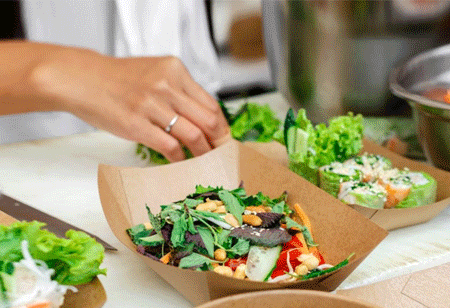THANK YOU FOR SUBSCRIBING
Be first to read the latest tech news, Industry Leader's Insights, and CIO interviews of medium and large enterprises exclusively from Food and Beverage Tech Review
Growth of Perishables Sector at Stake Over Missing Magic
Why consumers have not encouraged growth in perishables delivery is due to various reasons.

By
Food and Beverages Tech Review | Monday, August 26, 2019
Stay ahead of the industry with exclusive feature stories on the top companies, expert insights and the latest news delivered straight to your inbox. Subscribe today.
Why consumers have not encouraged growth in perishables delivery is due to various reasons. But, can the retailers consider and re-configure the services to suit the consumer, or is it the process too gingerly?
FREMONT, CA: Although food services have effortlessly topped the markets in terms of growth, the category of food products is often not the consumer’s first choice. A survey conducted in the whole of the U.S. showcased that more than 41 percent of consumers have obtained perishable goods like fresh fruits and vegetables, which are damaged. Even though it is a critical part of the order, the food delivery services have not been able to fulfill the delivery of perishable goods in a healthy and fresh condition.
A rise in the poll is observed among those who prefer to order perishable goods online. But, a sense of worry has existed among the consumers concerning products that might rot. The distaste over online delivery of perishables originates from the lack of knowledge about the delivery conditions of products. Whether it is carried in a temperature maintained van, or from where the produce originates.
On paper, the services guaranteed by the food delivery apps meet the standards, while the actual delivery systems have a lot of catching up to do, especially in case of fresh and frozen foods. The real struggle also lies in the delivery of produce, dairy products, meat, and ice-cream.
It is difficult to transport and deliver these goods because of its perishable nature and the need for particular environments. Some products require constant cooling to maintain its integrity, and some products need exact room temperatures. Considerations like these should be taken into account, overriding the whole concept of convenience, which is the fundamental ideology backing e-commerce.
Another significant reason for the nascent growth in the perishables category is the lack of experience. Almost 85 percent of the U.S. population appreciates and enjoys the experience of shopping for fruits, vegetables, and other groceries. While perishables are often unique in quality, products manufactured in bulk are similar to each other. Factors like the thickness of cut or the ripeness of the fruit is a personal choice, which consumers find joy in exercising. To make the category popular and enhance growth, retailers, or food service, providers need to consider these factors while making the delivery of fresh food.
I agree We use cookies on this website to enhance your user experience. By clicking any link on this page you are giving your consent for us to set cookies. More info







